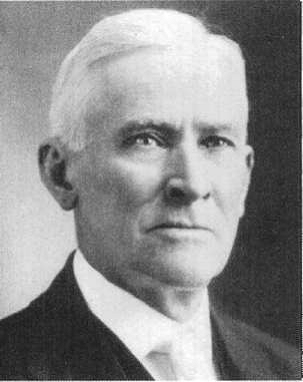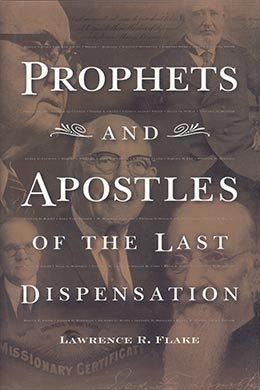Anthony Woodward Ivins
Lawrence R. Flake, Prophets and Apostles of the Last Dispensation (Provo, UT: Religious Studies Center, Brigham Young University, 2001), 199–201.

Born: 16 September 1852, Toms River, New Jersey
Quorum of the Twelve Apostles: 6 October 1907 (age 55)
Second counselor to President Heber J. Grant: 10 March 1921
First counselor to President Heber J. Grant: 28 May 1925
Died: 23 September 1934 (age 82), Salt Lake City, Utah
Nine-year-old Anthony W. Ivins was camped on Chicken Creek in Southern Utah, where his parents, along with a few other Saints, had been sent by Brigham Young to settle St. George, a place that would become the boy’s home for thirty-four years. At this camp he saw for the first time the girl who would become his wife. He wrote: “As I stood by the wagon tongue conversing with the man, a little girl walked up on the opposite of the tongue and from under a blue sun-bonnet looked at me, and I looked at her. I was thrilled with her beautiful brown eyes and could not forget them I continued to see her until we had grown to man and womanhood when she became my wife. She is with me still, the same sweet girl that she was at Chicken Creek. She has shared with me the dangers, trials and privations of pioneer life. No other has, or ever can take her place.” [1] The little girl was Elizabeth, daughter of apostle Erastus Snow. She and Anthony were married in 1878 and became the parents of nine children.
At the age of only thirteen, Anthony was ordained an elder. Not long afterward he was ordained to the Quorum of the Seventy and served in the Mutual Improvement Association presidency of several wards and later of the stake. In 1875 he was called on the first of two missions to the Native Americans and other residents of Arizona, New Mexico, and Mexico. On this first missionary journey, he and his companions distributed 2,500 copies of extracts from the Book of Mormon. In 1882, after serving his second mission, he was called to Mexico City, where he became mission president. Returning to St. George in 1884, he served in the stake presidency and prospered in the land and cattle business. Active in civil affairs, Brother Ivins served as a representative to the territorial legislature, as a delegate to the constitutional convention, and as a government Indian agent, in which capacity he secured an appropriation for the Shivwits Indians to move to a reservation on the Santa Clara River.
In 1895 President Woodruff called Brother Ivins to preside over the affairs of the Church in Mexico. The Mormon colonies owe a large measure of their establishment and progress to his pioneering genius. At that time he also headed the Dublan Mercantile Company, the largest in that part of Mexico. Upon his return to Utah in 1907, he was ordained an apostle. In this capacity he was the president of the general Young Men’s Mutual Improvement Association, president of the board of trustees of the Utah Agricultural College, and on the boards of several banks. After serving fourteen years in the Quorum of the Twelve, he became a counselor in the First Presidency until he died at the age of eighty-two.
This general authority was a versatile man of many talents. A great pioneer, he was rugged, but not crude. Though a man of action, he was a sound thinker, writer, and preacher. He was statuesque in appearance, especially as seen mounted on a fine horse. Three years before President Ivins’s death, Bryant S. Hinckley described the aging general authority in these words: “With his warm sympathies developed, his tenacious memory unimpaired, his poetic imagination alert, his flawless judgment matured, he stands on the threshold of his eightieth year a shining example of a many-sided, self-made, successful man, one of the most highly esteemed and universally beloved citizens of the commonwealth.” [2]
Notes
[1] “Anthony W. Ivins,” Improvement Era, September 1931,638.
[2] Bryant S. Hinckley, “President Anthony W. Ivins,” Improvement Era, November 1931, 6; see also “President Anthony W. Ivins,” Juvenile Instructor, April 1920.
